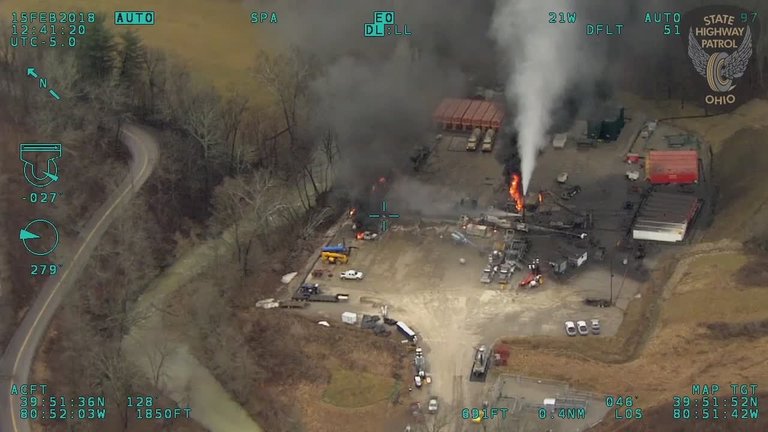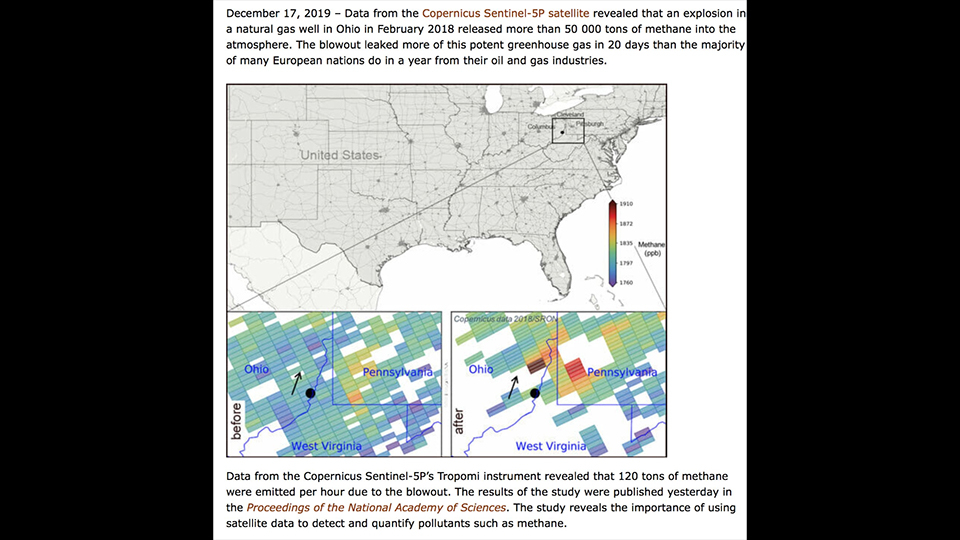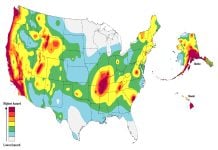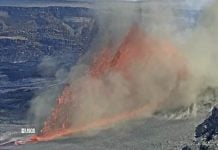A methane blowout in Ohio made little news in 2018…
But satellite images show it was a major global event.

Methane is sweeping from the ocean floor off Oregon’s coast at unprecedented rates. But the gas sometimes bursts without notice from the ground. According to a new published paper, a little-noticed 2018 methane leak at an Exxon Mobil site in Ohio was one of the worst in recent memory. It outpaced the methane emissions from the entire oil and gas industries of many countries.
Methane Explosion in Belmont County, Ohio
When the natural gas well in Belmont County, Ohio, blew in February, it was a significant local event, prompting the evacuation of about 100 residents within a 1-mile (1.6 kilometers) radius.
But it wasn’t clear how large the leak was until researchers in the new paper, studying data from a new European Space Agency (ESA) methane-monitoring satellite, spotted the plume.
The blown well was pumping 132 tons (120 metric tons) of methane into the atmosphere every hour, give or take 35 tons (32 metric tons).
That’s nearly double the rate of a much more famous leak reported at a SoCalGas site in Aliso Canyon, California, in 2015.
What is Methane Gas?
Invisible, odorless methane is one of the most important sources of greenhouse gases after carbon dioxide.
It is responsible for at least one-quarter of all global warming that greenhouse gases are causing in 2019.
That’s despite the substance’s concentration in the atmosphere, which is much lower than CO2’s.
The gas is 80 times more potent at warming the planet than carbon dioxide in the first decade after the substance released.
Emissions of this gas hang around in the atmosphere for just 10 years, while carbon dioxide can last thousands of years.
But methane emissions are difficult to track, with many significant emissions sources likely going unreported.
The advent of remote methane-sensing equipment on ESA satellites is offering researchers a new window onto the problem.
Large Methane Leaks Going Unnoticed
The researchers spotted the leak’s plume traveling north along the Ohio-Pennsylvania border and then east into Pennsylvania on 27 February, 2018, which was the 13th day in the blowout period.
The leak continued until March 7, at which point the event had gone on for 20 days.

Exxon originally reported smaller figures for the methane leak, though the company now accepts this paper’s numbers.
A company spokesman, Casey Norton, said that the event was an “anomaly.”
It’s likely that other, similar leaks routinely go unnoticed. For more headlines like this follow Strange Sounds and Steve Quayle. [PNAS]













You american’s love to f*ck this world….. You’re country alone has sped up the process of the end of human times by 10 fold.
When you burn it, it’s no longer methane.